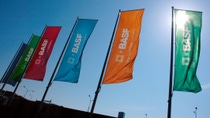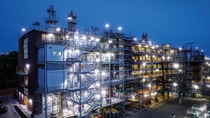Sustainability
Our Carbon Management

We want to live up to our responsibility for climate protection. One way we do this is with our products, which enable our customers to lower CO2 emissions. But that is not all: We also become more efficient in our production and energy use, we will increase our use of renewable energies and we will accelerate the development and deployment of new CO2-free processes for the production of chemicals.
How can we create a more climate-friendly chemical industry?

BASF is setting itself an ambitious goal of net zero by 2050 because we are convinced of the long-term strategic necessity and technical feasibility. Nevertheless, most new technologies are not yet competitive under the current conditions. Since the replacement of existing highly efficient production processes by new plants is very capital-intensive, BASF is working on German and European funding programs such as the IPCEI (Import Project of Common European Interest).
In addition, we work with numerous partners from universities, research institutes and companies on sustainable solutions for a carbon neutral future. We are convinced that the challenges of climate change can only be mastered together with our partners.
News board
Find out more about:


![Steamcracker im BASF-Werk Ludwigshafen . Eine Fläche von rund 64.000 Quadratmetern das entspricht 13 Fußballfeldern umfasst der Steamcracker II, die größte einzelne Anlage am Standort Ludwigshafen der BASF. Der Cracker ist auch das "Herzstück" der Verbundproduktion. Seit 1981 ist dieser Gigant in Betrieb und spaltet unter Zusatz von Wasserdampf bei etwa 850 Grad Celsius Rohbenzin auf. Dabei entstehen im wesentlichen Ethylen und Propylen, beides unverzichtbare Grundstoffe für die Herstellung vieler Produkte in Ludwigshafen. Abdruck honorarfrei. Copyright by BASF.
Steam cracker at BASF's Ludwigshafen site. Steam cracker II, the largest individual plant at BASF's Ludwigshafen site, covers a surface area of about 64,000 square meters, which is about the size of 13 soccer fields. The steam cracker is also the heart of BASF's Verbund production strategy. This giant plant has been operating since 1981 and uses steam to crack naphtha at about 850°C [1,562°F]. This process leads primarily to ethylene and propylene, both indispensable feedstocks for manufacturing numerous products in Ludwigshafen.Print free of charge. Copyright by BASF. Steamcracker im BASF-Werk Ludwigshafen . Eine Fläche von rund 64.000 Quadratmetern das entspricht 13 Fußballfeldern umfasst der Steamcracker II, die größte einzelne Anlage am Standort Ludwigshafen der BASF. Der Cracker ist auch das "Herzstück" der Verbundproduktion. Seit 1981 ist dieser Gigant in Betrieb und spaltet unter Zusatz von Wasserdampf bei etwa 850 Grad Celsius Rohbenzin auf. Dabei entstehen im wesentlichen Ethylen und Propylen, beides unverzichtbare Grundstoffe für die Herstellung vieler Produkte in Ludwigshafen. Abdruck honorarfrei. Copyright by BASF.
Steam cracker at BASF's Ludwigshafen site. Steam cracker II, the largest individual plant at BASF's Ludwigshafen site, covers a surface area of about 64,000 square meters, which is about the size of 13 soccer fields. The steam cracker is also the heart of BASF's Verbund production strategy. This giant plant has been operating since 1981 and uses steam to crack naphtha at about 850°C [1,562°F]. This process leads primarily to ethylene and propylene, both indispensable feedstocks for manufacturing numerous products in Ludwigshafen.Print free of charge. Copyright by BASF.](/api/imaging/focalarea/16x9/210x/dam/jcr%3Ae702ae61-cf65-3a91-8510-5c51d2dd6e01/Steamcracker_BASF-Werk.jpg)


